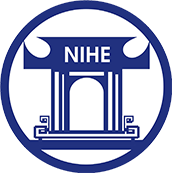THÔNG TIN VỀ CÁC KẾT LUẬN MỚI LUẬN ÁN CỦA NCS. NGUYỄN MINH HẢI
THÔNG TIN VỀ CÁC KẾT LUẬN MỚI CỦA LUẬN ÁN
Đề tài luận án: “Thực trạng hệ thống giám sát bệnh truyền nhiễm tại Hà Nội và hiệu quả một số biện pháp can thiệp”
Chuyên ngành: Dịch tễ học Mã số: 62 72 01 17
Họ và tên nghiên cứu sinh: NGUYỄN MINH HẢI Khóa đào tạo: K33
Họ và tên người hướng dẫn khoa học: 1.GS.TS Trịnh Quân Huấn
2. PGS.TS Hoàng Đức Hạnh
Cơ sở đào tạo: Viện Vệ sinh Dịch tễ Trung ương
Tóm tắt những kết luận mới của luận án:
1. Thực trạng hệ thống giám sát bệnh truyền nhiễm tại Hà Nội năm 2012
Nhân lực Hệ thống giám sát bệnh truyền nhiễm của Hà Nội đủ về số lượng nhưng chất lượng còn hạn chế: Bác sỹ chiếm 16% tổng số nhân lực của Trung tâm Y tế quận, huyện (TTYT) và 84,3% Trạm Y tế xã, phường (TYT) có bác sỹ.
Tỷ lệ thực hiện báo cáo tuần, tháng của TTYT (60,5% và 87,9%) cao nhất, tiếp đến là TYT (20,5% và 68,1%) và thấp nhất ở nhóm bệnh viện (BV), phòng khám đa khoa (PKĐK) (16,6% và 13,1%). 93,1% TTYT có phân tích, phiên giải số liệu, TYTlà 39,1%; BV và PKĐK không phân tích, phiên giải số liệu.
Kiến thức, thực hành của cán bộ giám sát có sự khác biệt giữa các đơn vị: Điểm kiến thức đạt khá và tốt cao nhất ở cán bộ của TTYT (65,4% và 20%), tiếp đến là cán bộ của TYT (26,8% và 3,1%), nhóm cán bộ của BV (13,8% và 3,4%) và PKĐK (3,4% và 0%). Điểm thực hành đạt khá và tốt cao nhất ở nhóm cán bộ của BV (41,4% và 13,8%), cán bộ của TTYT(29,1% và 0%), cán bộ PKĐK (20,7% và 3,4%).
2. Hiệu quả một số biện pháp can thiệp nâng cao chất lượng của hệ thống giám sát bệnh truyền nhiễm tại quận Đống Đa, Hà Nội
Giảm thời gian xử lý ổ dịch sốt xuất huyết dengue “tính từ ngày phát hiện bệnh nhân mắc đầu tiên đến khi ổ dịch kết thúc” từ 19,5 ± 4,5 ngày xuống 16,9 ± 3,2 ngày có ý nghĩa thống kê (p<0,05), độ nhạy tăng từ 59,3% lên 71% (p<0,05).
Cải thiện chất lượng báo cáo của TTYT và TYT: 100% báo cáo tuần, tháng được thực hiện; 98,9%-100% báo cáo đúng hạn; 100% báo cáo đầy đủ thông tin (khác biệt có ý nghĩa thống kê với p<0,05); 100% TYT phân tích số liệu với chỉ số hiệu quả đạt từ 233%-1900% (p<0,001).
Kiến thức, thực hành của cán bộ giám sát bệnh truyền nhiễmđược nâng lên: Độ chênh điểm trung bình về kiến thức của cán bộ TYT là 12,4 điểm, độ chênh điểm trung bình về thực hành là 2,0 điểm có ý nghĩa thống kê với p<0,0001.
Hà Nội, ngày tháng năm 2019
Đại diện người hướng dẫn PGS.TS Hoàng Đức Hạnh | Nghiên cứu sinh Nguyễn Minh Hải |
INFORMATION ON NEW INPUTS OF PhD THESIS
Thesis tittle: “Current status of infectious disease surveillance system in Hanoi and the effectiveness of some intervention measures”
Major: EPIDEMIOLOGY Code: 62 72 01 17
Name of PhD student: NGUYỄN MINH HẢI Education course: K33
Name of Scisentific Supervisors: 1. Prof. Trinh Quan Huan, PhD, MD
2. Assoc.Prof. Hoang Duc Hanh, PhD, MD
Education Institution: National Institute of Hygiene & Epidemiology
SUMMARY OF THE NEW INPUTS OF THE THESIS
1. Actual situation of infectious disease surveillance system in Hanoi in 2012
Human resources of Hanoi infectious disease surveillance system is sufficient in quantity but still limited in quality: Doctors accounted for 16% of the total number of district health workers and 84.3% of commune health stations has doctors.
The highest rateof weekly and monthly performed reports wasobserved at district health centers (60.5% and 87.9%), followed by commune health stations (20.5% and 68.1%) and the lowest was obtained at hospitals and private polyclinics (16.6% and 13.1%). 93.1% of health centers and 39.1% of commune health station showed to have capacity to analyze, interpretation surveillance data while its not done at hospitals and polyclinics.
Knowledge and practice of health staff participated in disease monitoring was found differ between the units: the rate of those having good and excellent knowledge was highest among health staff of district health centers (65.4% and 20%), followed by staff of commune helth stations (26.8% and 3.1%), staff of hospitals (13.8% and 3.4%) and staff of polyclinics (3.4% and 0%). Rate of staff showed to have good and very good practice were highest among staff of hospitals (41.4% and 13.8%), district health center (29.1% and 0%) and polyclinics (20.7% and 3.4%).
2. Effectiveness of interventions to improve the quality of infectious disease surveillance system in Dong Da district, Hanoi
Reduced outbreak handling timeline "from the date of first case detection to the end of outbreak" from 19.5 ± 4.5 days to 16.9 ± 3.2 days (p<0.05) with the sensitivity increased from 59.3% to 71% (p<0.05).
Improved the quality of reports performed by district health centers and commune health stations: 100% of weekly and monthly reports were performed; 98.9%-100% were reported in time; 100% were reported with full required infomation; 100% of commune health stations showed to have capacity to analyze surveillance data with efficiency index of 233% -1900% (p<0.001).
Knowledge and practice of staff involved in disease monitoring was remarkable improved (the average difference in knowledge of commune health station’s staff was 12.4 points, the average difference in practice was 2.0 points (p<0.0001).
Hanoi, July 2019
Represent of Supervisors Assoc.Prof. Hoang Duc Hanh | PhD student Nguyen Minh Hai |
Tải file tóm tắt luận án Tiếng Việt tại đây:
Tóm_tắt_luận_án__tiếng_Việt_-_Nguyễn_Minh_Hải.pdf
Tải file tóm tắt luận án Tiếng Anh tại đây:
Tóm_tắt_luận_án__tiếng_Anh_-_Nguyễn_Minh_Hải.pdf
Tải file luận án tiến sĩ tại đây:
Luận_án_toàn_văn__Nguyễn_Minh_Hải.pdf








